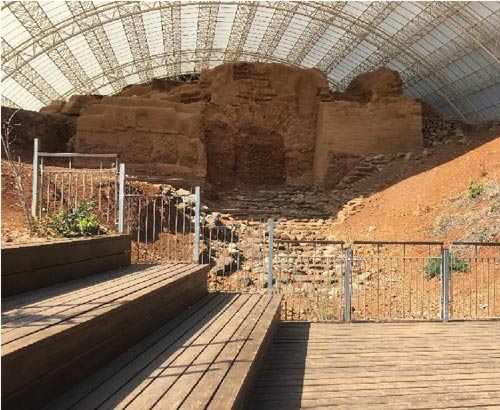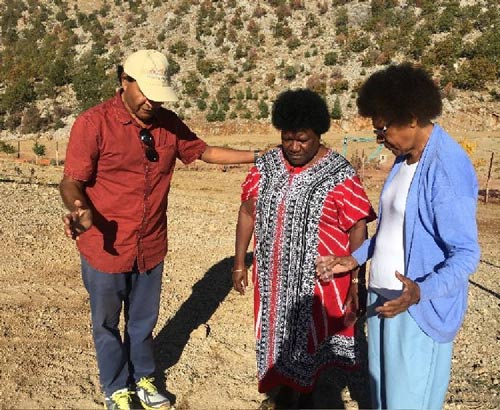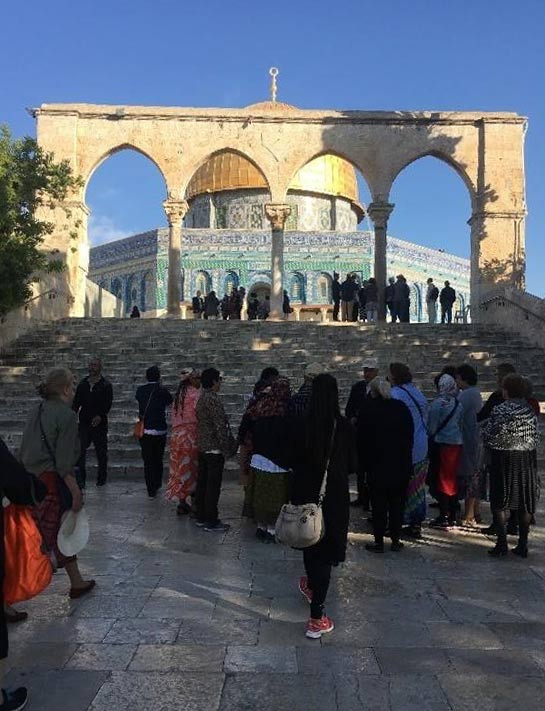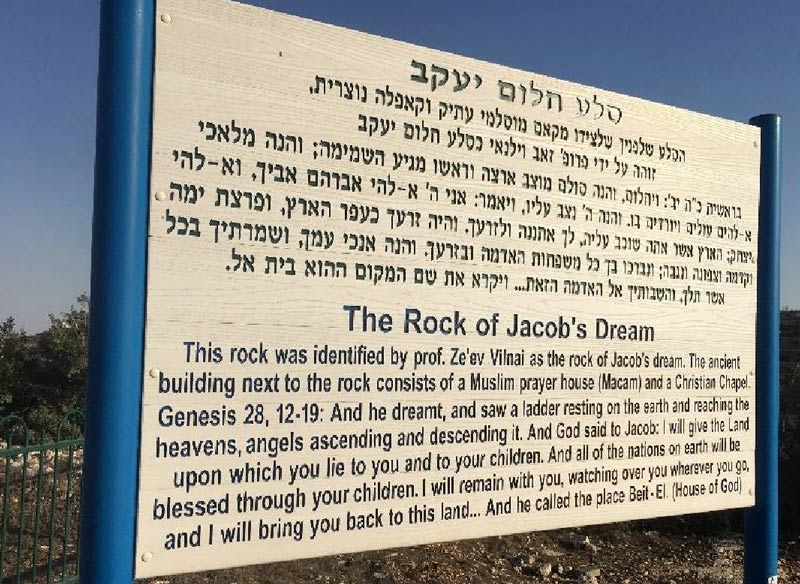In October 2017, Norman Miller, co-founder of Indigenous Friends of Israel and the Centre for International Reconciliation and Peace, and I led a Sons of Abraham ANZAC tour to Israel. It was a team of 50 people from Australia including First Nations and Chinese, and from New Zealand, Pacific Islands, England and Ireland. We timed it for the 100th anniversary of the Battle of Be’er Sheva and the Welcome the King of Glory conference. We also hosted a Sons of Abraham conference in Jerusalem during our visit.
This short report just focuses on one important aspect of our visit through Judea and Samaria which some call the West Bank. Our focus was on visiting sites where God made covenant with Abraham (Abram) and Abraham built altars to the Lord as this shows a long-term historic connection of the Hebrew people to the land known today, and in the past, as Israel. In fact, the connection is all the way back to about c.1855BC when God instructed Abram to go to the Promised Land.
God covenanted with Abram (later called Abraham) and made the following promises:
- To make of Abraham a great nation and bless Abraham and make his name great so that he will be a blessing. Those who bless him will be blessed and those who curse him will be cursed and all peoples on earth would be blessed through Abraham. (Genesis 12:1-3)
- To give Abraham’s descendants all the land from the river of Egypt to the Euphrates. (Genesis 15:18-21) Later, this land came to be referred to as the Promised Land or the Land of Israel. He was told to count the stars as that is how many descendants, he would have though he was childless in his old age.
- To make Abraham the father of many nations and give “the whole land of Canaan” to his descendants. (Genesis 17:2-9) Circumcision is to be the permanent sign of this everlasting covenant with Abraham and his male descendants. God changed Abram’s name to Abraham and Sarai’s name to Sarah.
This covenant was renewed with Abraham’s son Isaac and Isaac’s son Jacob who was renamed Israel after an encounter with the Lord.
We visited the places where God made covenant with Abraham and/or where Abraham made altars to the Lord. This is the heartland of Israel but is today considered West Bank or occupied territory. Most of it is under the control of the Palestinian Authority and there are Jewish settlements there. We had a Christian Arab tour guide as Jews are not welcome there and we were told Jews with Israeli number plates go there at their own risk.
After Abraham arrived in Canaan, the first place he went to was Shechem where God promised to give the land to his descendants (Genesis 12:7) and he built an altar. Then he went to the hill country between Beth El and Ai (Genesis 12:8) where he built an altar. He also built an altar at Hebron as he worshipped the Lord. On 18 October, we visited Shechem (Nablus) and Beth El (Ramallah) and worshipped, prayed and had communion there, with Norman pouring the communion wine on the ground afterwards for healing of the land. It was a very special time following in the footsteps of the patriarchs.
 |
 |
| Prayer at Beth El photo by Barbara Miller | Prayer at Shechem photo by Barbara Miller |
We also prayed at Beth El where Jacob had the dream of the stairway to heaven with angels ascending and descending on it and God speaking to him from above. As Norman read the scripture (Genesis 28), he suggested we lay our heads on the rock and pray for an impartation of dreams and visions and the interpretation of them. A number of us did including me. I often wondered when I read scripture how Jacob could sleep on a rock but this rock was long and flat and not high off the ground so now I can imagine it. It was a special experience.
On 22 October we went to the national park at Tel Dan and prayed at Abraham’s Gateway –very imposing.
 |
 |
| Abraham’s Gate Tel Dan photo by Barbara Miller | Norman & I & Martina & Annie praying & communion at Mt Hermon photo by Barbara Miller |
On 22 October we also prayed at Mt Hermon which included prayers for unity of believers as in Psalm 133. Mt. Hermon is a series of three peaks on the border of Syria and Lebanon so is a good place to pray for peace. It is one of the proposed mountains for the transfiguration of Jesus. Jewish tradition has it as the site of God’s covenant with Abraham (Genesis 15). Our group prayed and took communion and then Norman took Martina, Annie and I aside for more prayer and he poured the communion juice on the ground for healing of the land. Martina and Annie prayed anointed prayers. Sharon Brown said she saw the mountain shake and felt there had been a real shift in the spirit.
On 24 October we visited Hebron where Abraham built an altar and it is the Tomb of the Patriarchs. It is a place not often visited but we entered the Jewish side. There is also a Muslim side with a mosque. Last time we were here we did a prophetic act of burying sibling rivalry but this time we could only read one scripture out of respect for many Orthodox Jews praying and studying there.
We also visited Mamre. It was the dwelling place of Abraham and Isaac, near the oak grove belonging to Mamre and the scene of the Lord’s appearance (theophany) to Abraham to announce the birth of Isaac (Genesis 18). Mamre was also the location of the burial-place of the patriarchs (the field at Machpelah that Abraham purchased) which was nearby (Genesis 13:18; 18:1; 25:9; 35:27; 49:30). It is now basically ruins. People have tried to grow an oak tree here but have failed. Nevertheless, a shoot has come up near it on its own. There is a school on one side with children playing and on the other side a mosque with a very loud call to prayer. I had to pray very loudly to hear myself over it.
 |
 |
| Mamre Sign photo by Barbara Miller | Praying at Mamre Oct 17 by Barbara Miller |
We also visited Mt Moriah or the Temple Mount on 24 October where Abraham was prepared to sacrifice Isaac (Genesis 22). This is a special altar to the Lord. We were told we might not get in but we did. It was also the site of Solomon’s temple and the crucifixion of Jesus. We had to pray silently here. We had a brief time at the Western Wall.
The Al-Aqsa Mosque dominates the scene and it is typical of mosques being built over the holy sites of Judaism. Places such as Nazareth and Bethlehem are in the West Bank and Galilee was in the past. The keys to the Church of the Holy Sepulchre where many believe Jesus was buried are reportedly held by a Muslim family who open and close it each day due to arguments between the various Christian faiths who share territory inside the church.
It was such a privilege for us to be able to visit these holy and historic places and to have led an international team, which included Indigenous Friends of Israel.
 |
 |
| Hebron Tomb of the Patriarchs photo by Barbara Miller | Praying quietly at Temple Mount photo by Barbara Miller |
www.reconciliationandpeace.org

